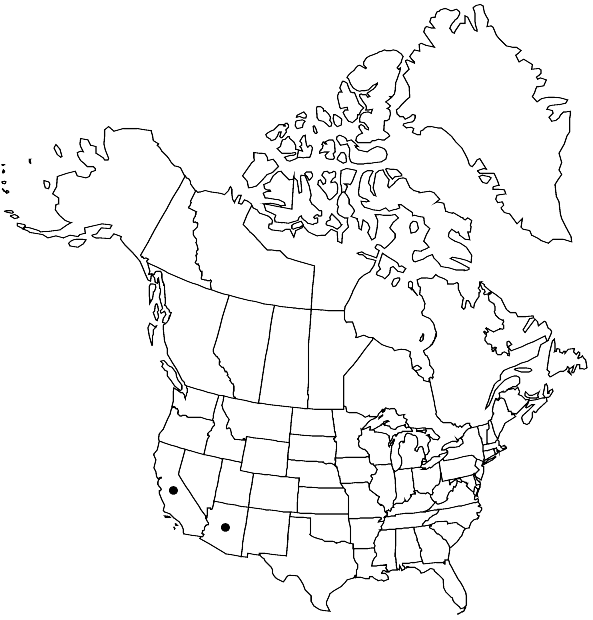Microbryum starckeanum var. starckeanum
Stem-leaves mucronate to short-awned. Capsule stegocarpous, peristome present, usually well-developed but truncate apically. Spores smooth or tuberculate.
Phenology: Capsules mature winter (Jan–Feb).
Habitat: Bare soil, fields
Elevation: low elevations
Distribution

Ariz., Calif., Mexico (Baja California), Europe, n Africa, Pacific Islands (New Zealand)
Discussion
A collection from California (Pasadena, “g. 9”, US) has three variants, including var. starckeanum, var. fosbergii, and what is probably best called var. starckeanum but which has an indehiscent operculum, even upon heating in KOH and Pohlstoffe. Another, from Arizona (Pima County, E. B. Bartram 990, Musci Acroc. Bor.-Amer. 572, US) includes var. starckeanum, var. brachyodus, and the indehiscent variant of var. starckeanum. Collections with capsules toward the large end of the size scale, previously called Pottia arizonica, often have entirely smooth spores; commonly, however, some tuberculate and characteristic of M. starckeanum can be identified in at least some capsules. Also, D. F. Chamberlain (1978) described M. starckeanum (as Pottia starckeana) as having smooth or tuberculate spores in his treatment for the British Isles. Capsule contents not differentiating into spores is not uncommon in variants of M. starckeanum, indicating the possibility of occasional hybridization.
Selected References
None.